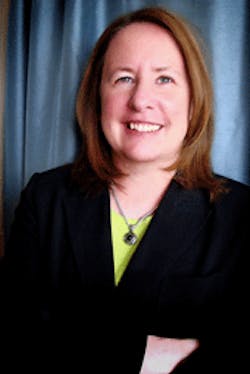December 7, 2011
Electric utilities operated under a rarified business model for decades. Their customers were captive so they rarely had to think about what motivated them to buy. New government energy efficiency mandates have changed that, and done so with an ironic twist. Now utilities must figure how to get their customers to refrain from buying.
It’s not easy persuading people to stop using something they like as much as electricity. But behavioral science is coming to the rescue – or at least trying to – as was apparent at the Behavior, Energy & Climate Change conference held in Washington, DC, November 29 through December 2. About 650 people attended, many of them scientists, university researchers and college students, ready to tackle energy efficiency’s biggest hurdle: human nature.
“The challenge that we have is not just to fix the buildings; we have to fix the people who live work and play in those buildings. We have to fix us,” said Brian Keane, of SmartPower.
While behavioral scientists and economists have only begun their work, it’s already clear that utilities and government programs approach energy efficiency wrongheaded. They tend to talk about why energy efficiency is good for them, not the customer, why it makes the electricity grid function better or achieves government’s environmental goals.
The makers of Tide laundry detergent don’t tell customers they should buy the product because it makes the company lots of money, pointed out Lisa Skumatz, a Colorado-based economist. If the energy industry continues to sell energy efficiency as good for utilities, good for the environment, good for government, it will reach only a very narrow audience.
Utilities also must stop listening to what people say and instead focus on what they mean. But how do you do that? Jane Hummer of Navigant Consulting demonstrated how to analyze comments people post online to get at what they really think. “Consumers are increasingly narrating all aspects of their lives online,” creating “a free focus group that you can analyze at your leisure,” she said.
Don’t take what they say online at face value – after all many hide behind anonymity and therefore tend to speak in extremes – but “get at the underlying sentiment,” she said.
Using a spreadsheet and key word search, she analyzed comments posted from articles about smart meters in the Wall Street Journal and New York Times. In some states, consumers oppose smart meters, fearing they harm health and impinge on a homeowner’s privacy. Funny thing about the privacy concerns…some of the people who write that they are worried about privacy in the same post reveal details of their lives on line: their political affiliation, where they live, what they do. So is privacy really their concern?
Hummer pointed out that utilities can use the information gleaned from analyzing online comments to hone media campaigns and pre-empt hyperbolic hysteria. If consumers say they worry that smart meters may subject their children to radiation, a utility might launch a campaign about the health dangers of coal-fired plants and explain how smart meters lead to plant retirements.
Sometimes achieving better energy efficiency is just a matter of explaining to people what they should do – in good, clear language. Alan Meier, of the Lawrence Berkeley National Laboratory, analyzes what he calls “folk labels,” instructions on how to operate lighting and appliances, sometimes provided by the manufacturer and other times scribbled by well-meaning building occupants trying to explain light switches. What he has found is a mass of confusion. “We need to come up with some standardization soon,” he said.
Will the behavioral scientists succeed in a world where consumers rarely think about electricity? They are optimistic. Some point to the decline in cigarette smoking as an analogy; it’s no coincidence that smoking fell 20% from 1998 to 2005. The behavioral scientists were at work.
For more information on the frontier of energy and behavioral science, listen to Energy Efficiency Market’s free podcast, “What motivates consumers to use less energy,” with Susan Mazur-Stommen, director of the Behavior and Human Dimensions Program for the American Council for an Energy Efficient Economy, which sponsored last week’s conference along with the California Institute for Energy and Environment at the University of California and the Precourt Energy Efficiency Center at Stanford University.
Elisa Wood is a long-time energy writer whose work can be found at www.RealEnergyWriters.com
About the Author
Elisa Wood
Editor-in-Chief
Elisa Wood is the editor and founder of EnergyChangemakers.com. She is co-founder and former editor of Microgrid Knowledge.
